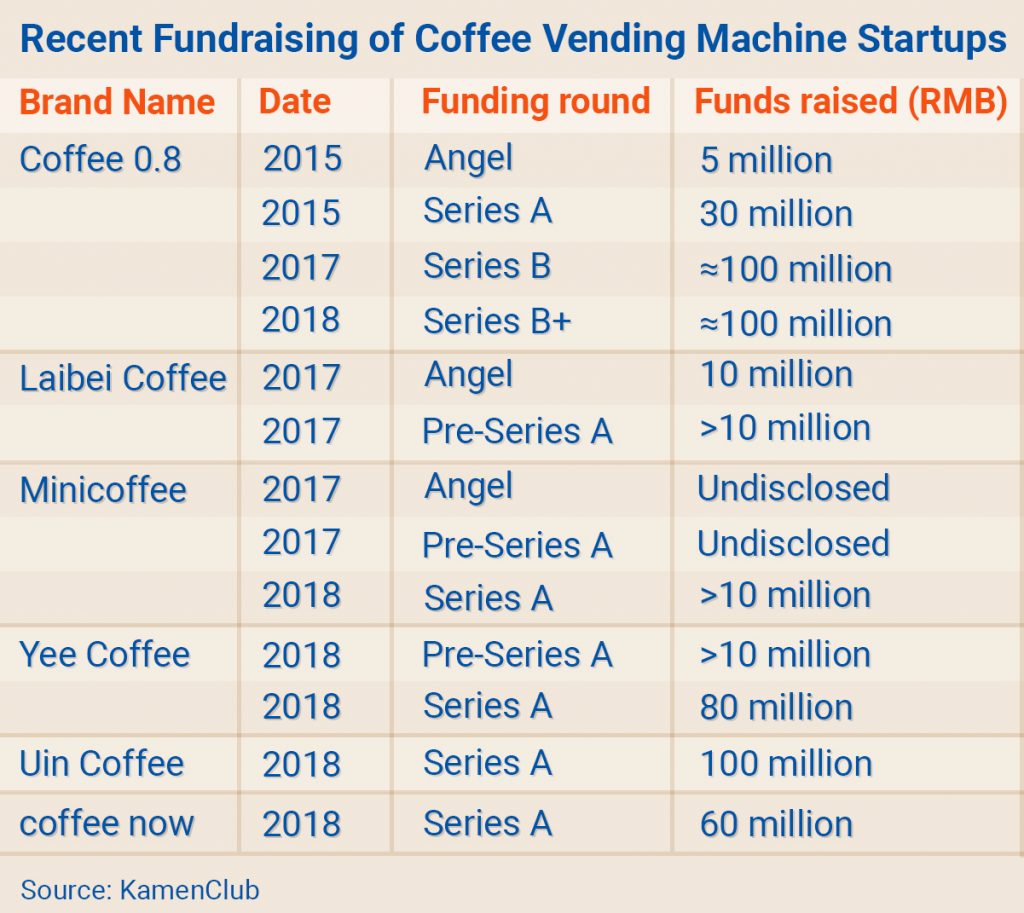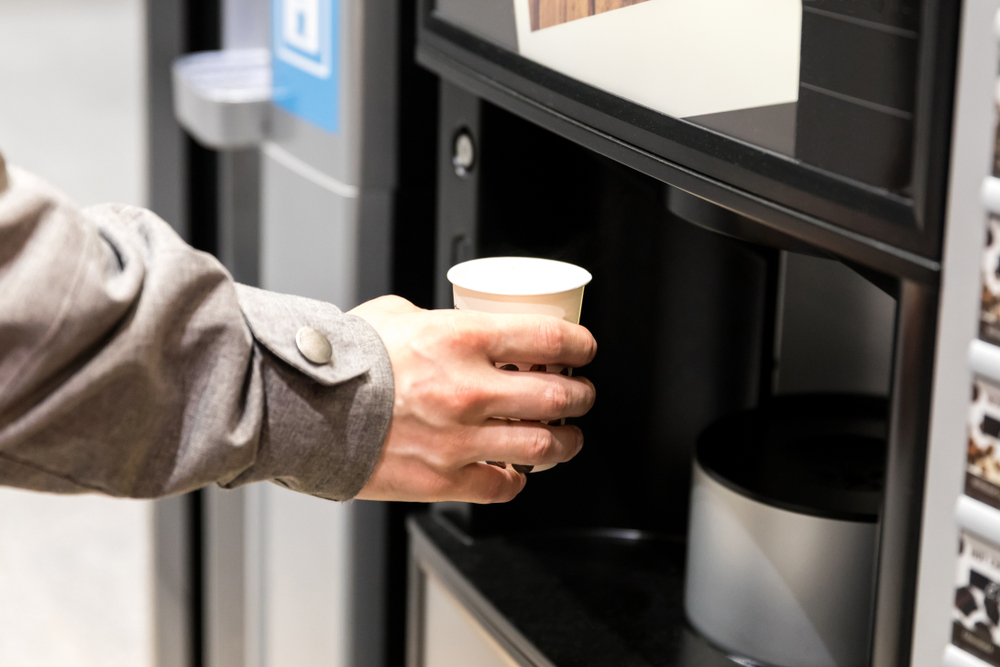China’s coffee industry is due for another shakeup soon, as China’s fastest-growing coffee chain, Luckin Coffee, is gearing up to launch its first slew of coffee vending machines.
Designed to be placed in public spaces like schools or office buildings, Luckin’s “Coffee Express” machines will be able to prepare a cup of Americano within 30 seconds after a customer pays by scanning a QR code with their phone.
While Luckin didn’t specify when the new machines will be selling its first cup of Joe, the expected move could add to the growing woes of existing coffee vending operators, which are already struggling to distinguish themselves in a crowded field.
Many startups and investors have joined the race to tap China’s growing appetite for caffeine. According to Jingdata, the insights arm of 36Kr, Chinese consumption of coffee products grew at a compounded rate of 15% for the past decade and was estimated to be worth RMB 100 billion (USD 14.2 billion) in 2018.
Caffeine addiction
The vending machine business model has emerged as an investors’ favorite, with more than 10 companies entering the market since 2015, said a report from KamenClub, an analytics and media platform for the tea, coffee and beverage industry.
Some companies, like Coffee 0.8, laud their use of the internet to streamline business processes. The “smart” coffee vending machine chain, which claims to have a few million users in China, uses cloud computing to centralize inventory data and orders. Established in 2015, the company has since raised more than RMB 200 million.

The coffee vending industry’s growth peaked last year, when nearly RMB 500 million in total financing was secured by just seven companies. They include Coffee Now and Uin Coffee, with the latter nabbing RMB 100 million in Series-A funding.
As raising labor and rental costs led to a wave of closures among traditional cafés after 2016, many startups seized on the flexibility and the low associated costs of vending machines as a new business opportunity.
“To survive, bricks-and-mortar coffee outlets need to locate themselves in the central business district to attract customers,” said Wang Shun, founder of Coffee 0.8, in an earlier interview with 36Kr. “But for us, we can go anywhere as long as there is human traffic, even if our machines are located in the suburbs of Beijing.”
Wei Qiao, an analyst at Danjie Chuangye, a media platform that features Chinese startups, estimated that a vending business would need to sell just over 370 cups of coffee a month to break even. And that’s based on a selling price of as little as RMB 10 per cup.
“With rental costs of about RMB 600 to 1,000 a month per location, and one worker being sufficient to maintain and operate up to 20 machines, this business model can be highly lucrative,” he wrote in an analysis published on 36Kr.
However, the mighty ambitions of coffee vending startups have been dampened by the rise of Luckin, well-positioned to overtake Starbucks to become China’s market leader by the end of this year. Luckin made headlines in May by raising USD 561 million in its US initial public offering, barely 18 months after its establishment and despite still posting a loss.
Luckin’s expected entry into the vending market potentially spells bad news for current operators, as many have been struggling to prevent recurrent machinery breakdowns and to ensure consistency of their coffee tastes, market observers say.

“It’s getting harder for a vending machine business to distinguish itself from the competition, as convenience stores and the coffee pick up model eat into its potential customer base,” Wei said.
Luckin isn’t the only threat. Convenience stores such as FamilyMart, 7-Eleven and fast-food chains McDonald’s and KFC have also entered the fray. A cup of latte at 7-Eleven, for instance, sells for less than RMB 10, while one beverage at Starbucks usually sets one back by over RMB 30.
Wang predicted that by the end of 2020, the coffee vending sector will be driven by the survival of the fittest. “Whichever company who can gain an edge over the others in operational efficiency will survive,” he said.
Amid a tougher competition landscape, some companies say it’s not the end of the road for their vending machine model.
Wing Cafe, a western-food restaurant brand which also runs coffee chains and tea shops, recently completed the acquisition of a coffee vending machine chain, Laibei Coffee. Wing Cafe was attracted by Laibei’s ability to operate profitably, and plans to merge its vending machines with Laibei’s to boost the total to as much as 4,000.
Upstream coffee producers have also shown interest. Milan Gold, one of China’s earliest coffee producers, is already in a partnership with Laibei to utilize its in-house blend for the latter’s vending machines.
Sun Henan contributed to this report.
The original article was written by WeChat public account Lingshou Laoban Neican. 36Kr, KrASIA’s parent company, was granted the rights to adapt it into English.
